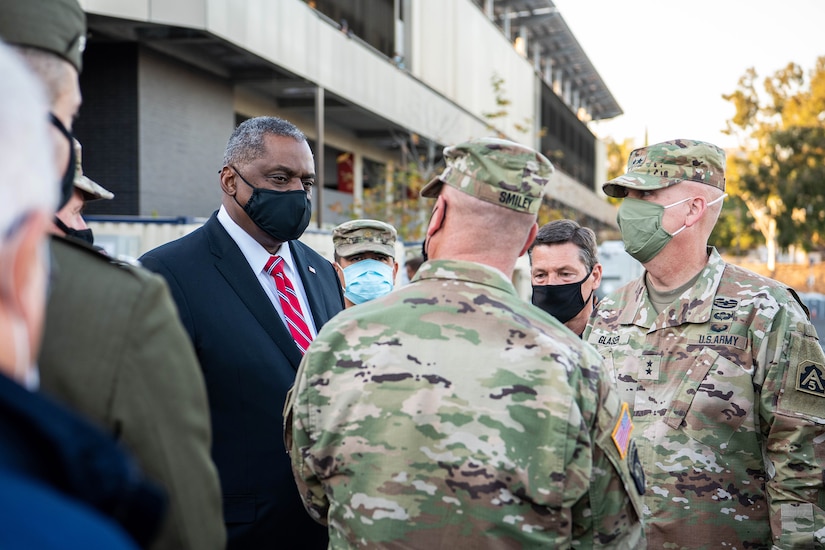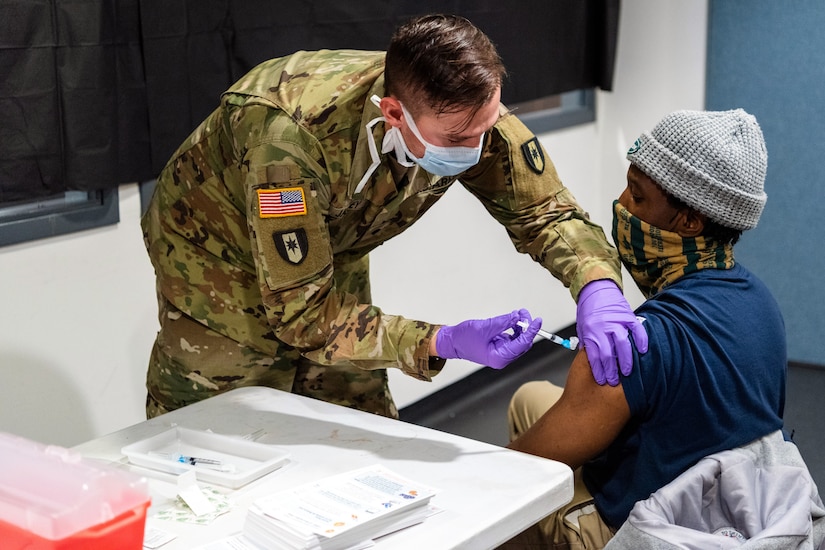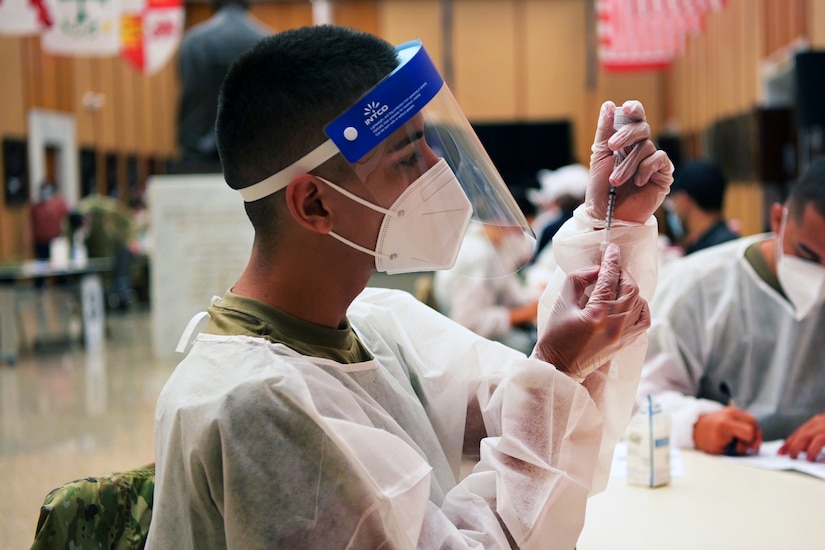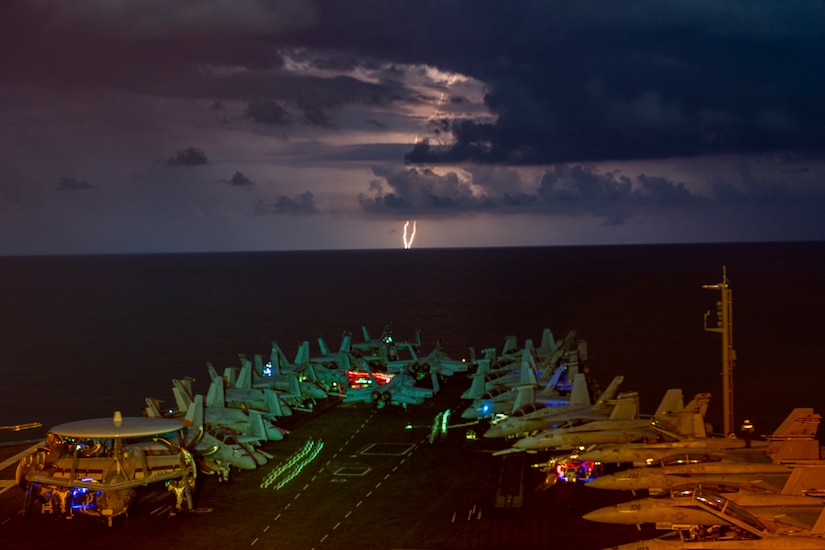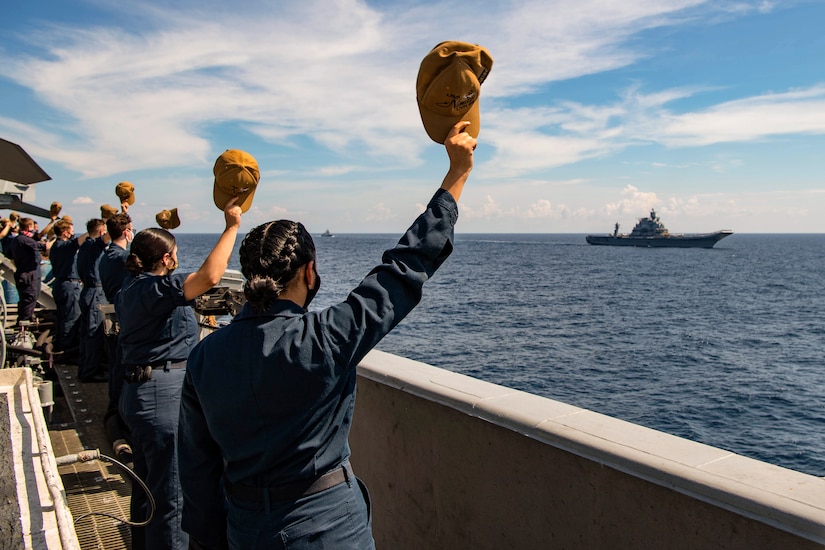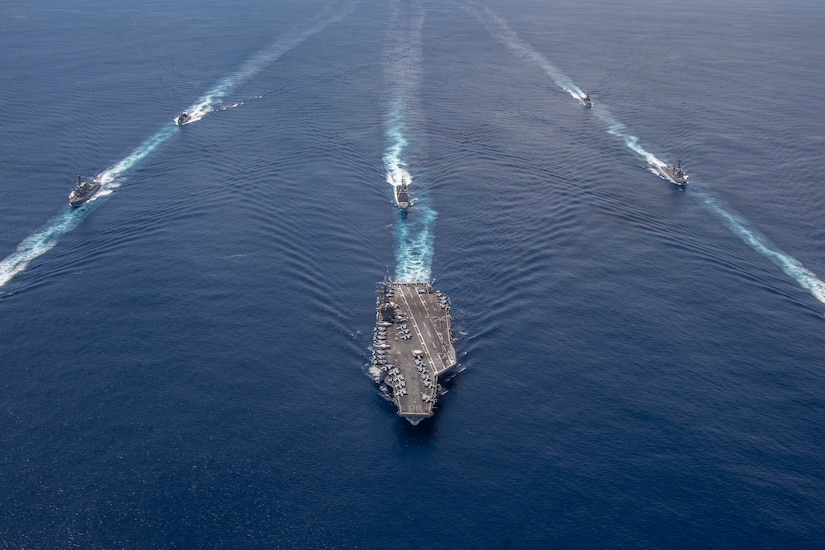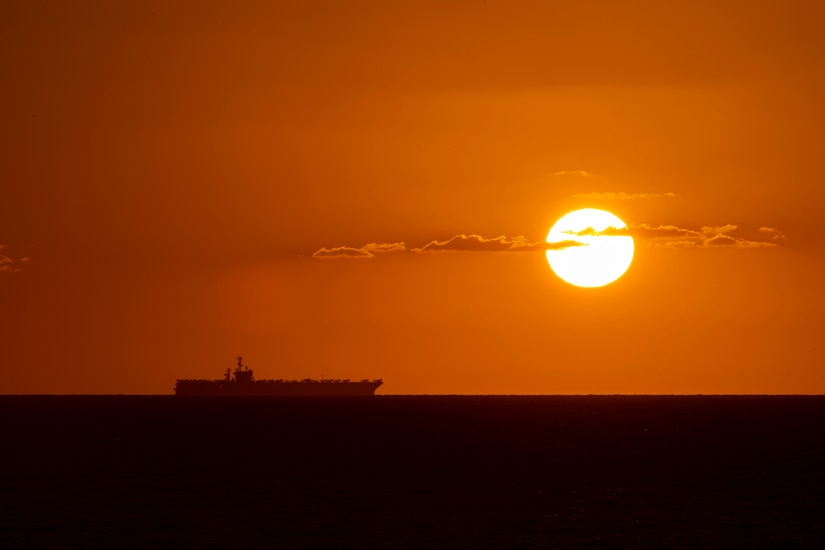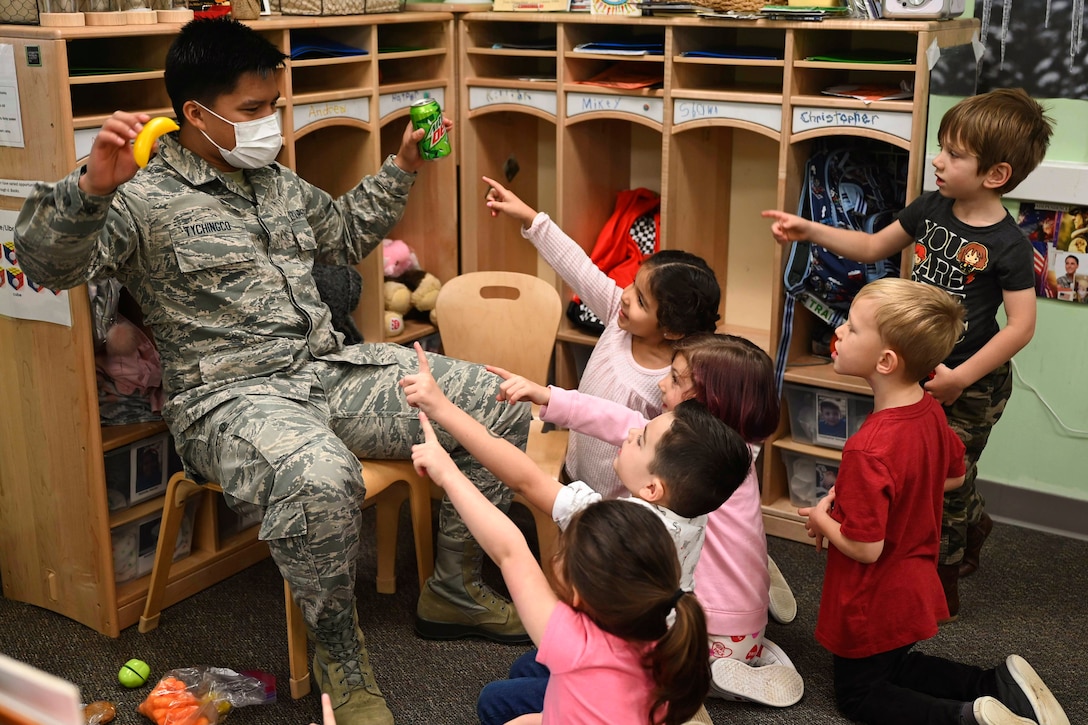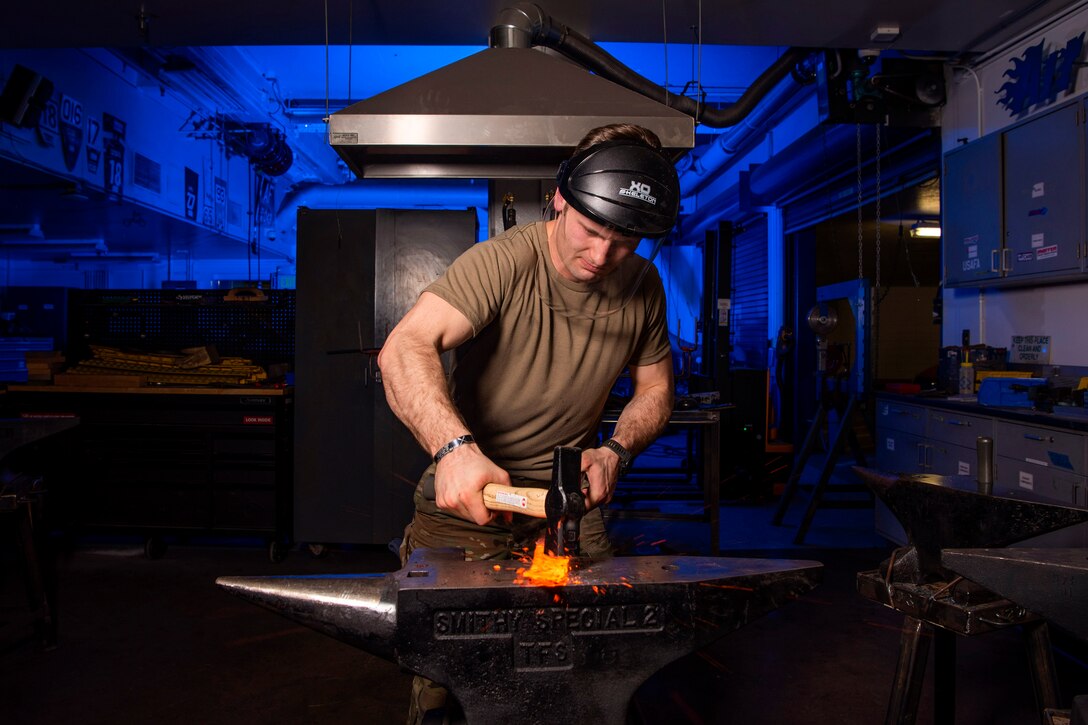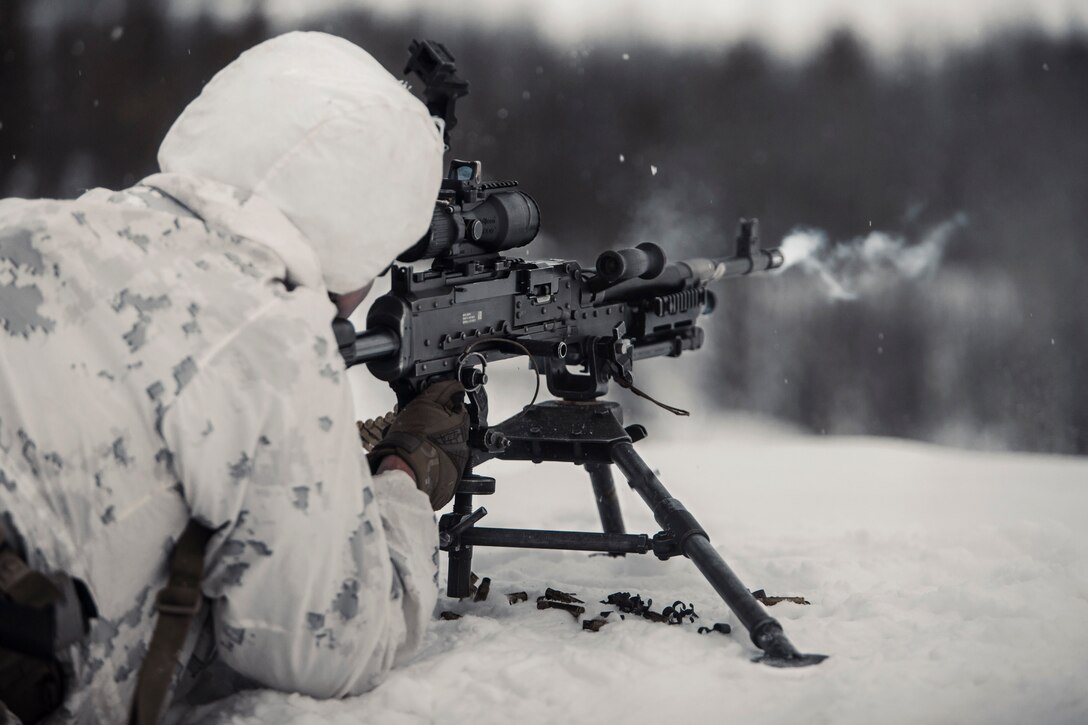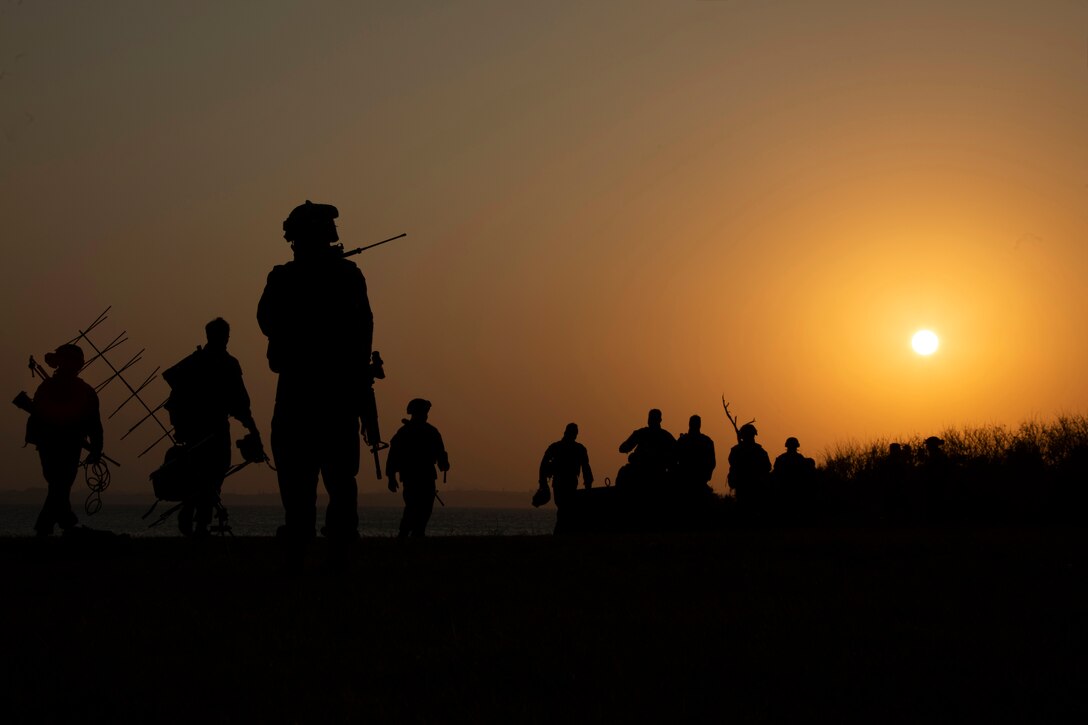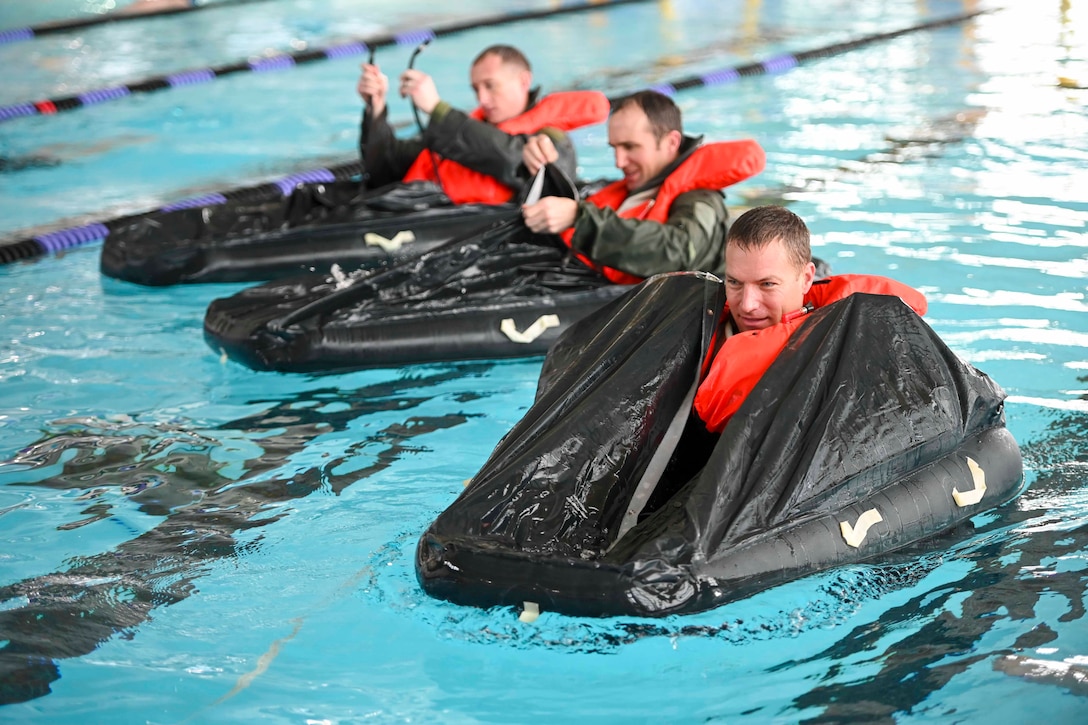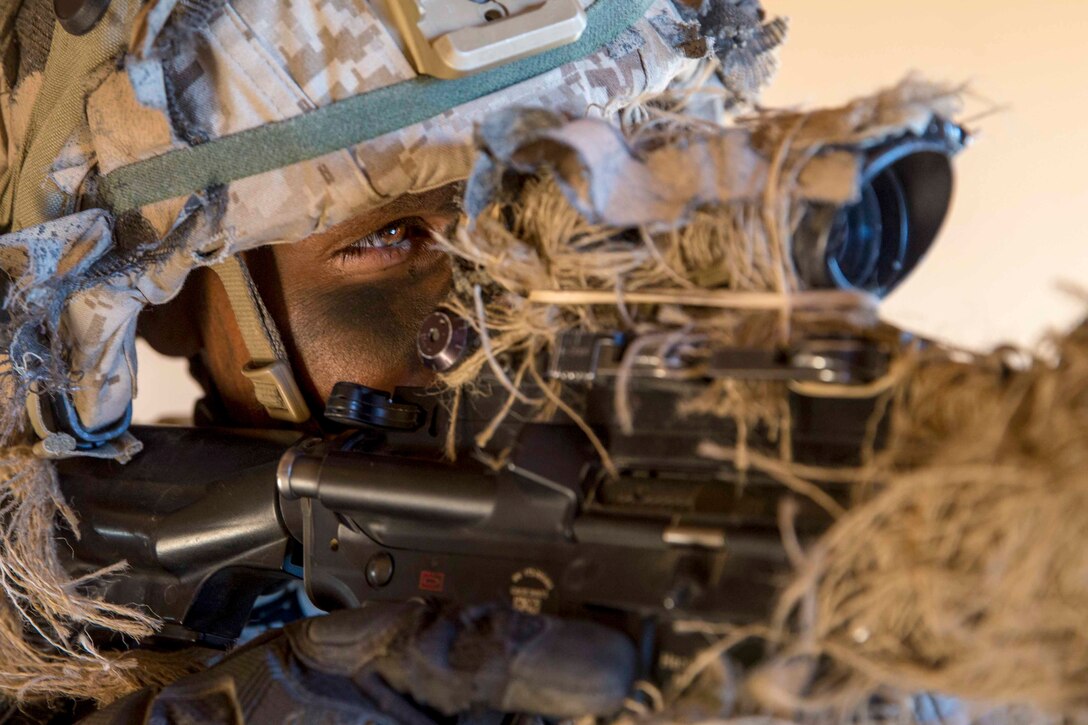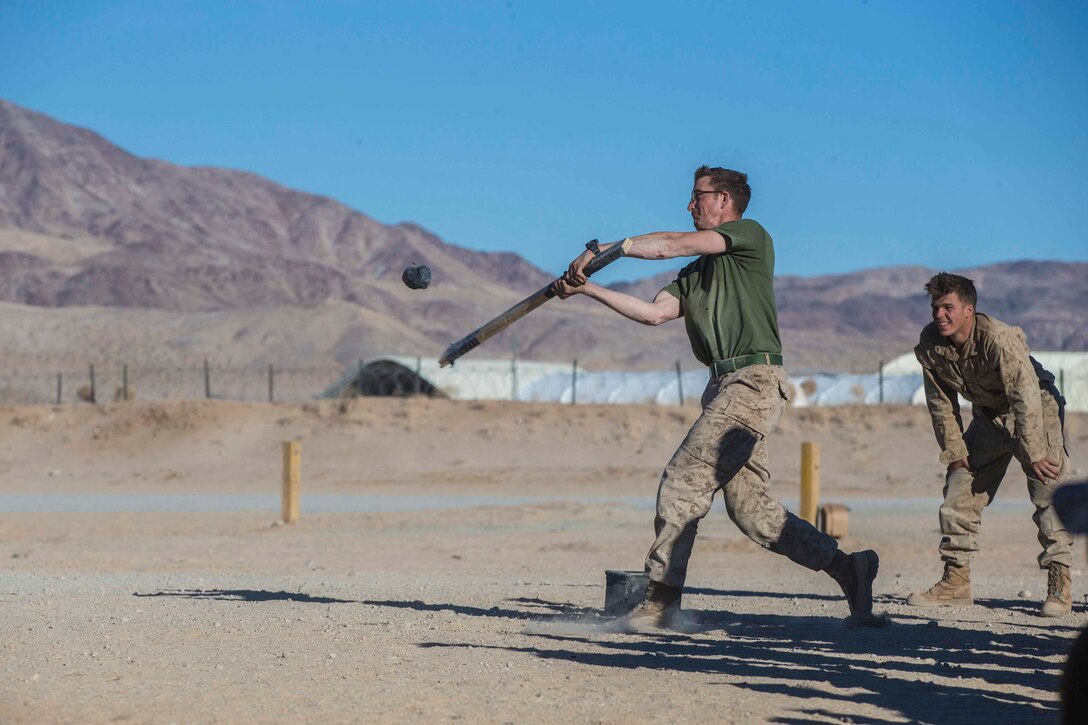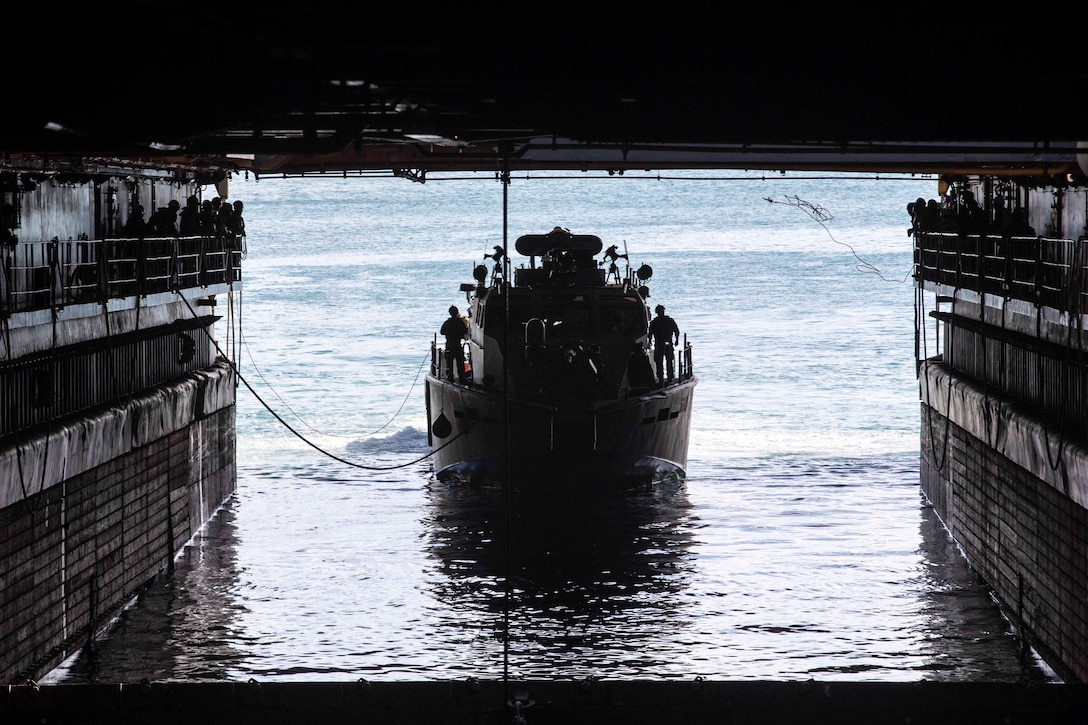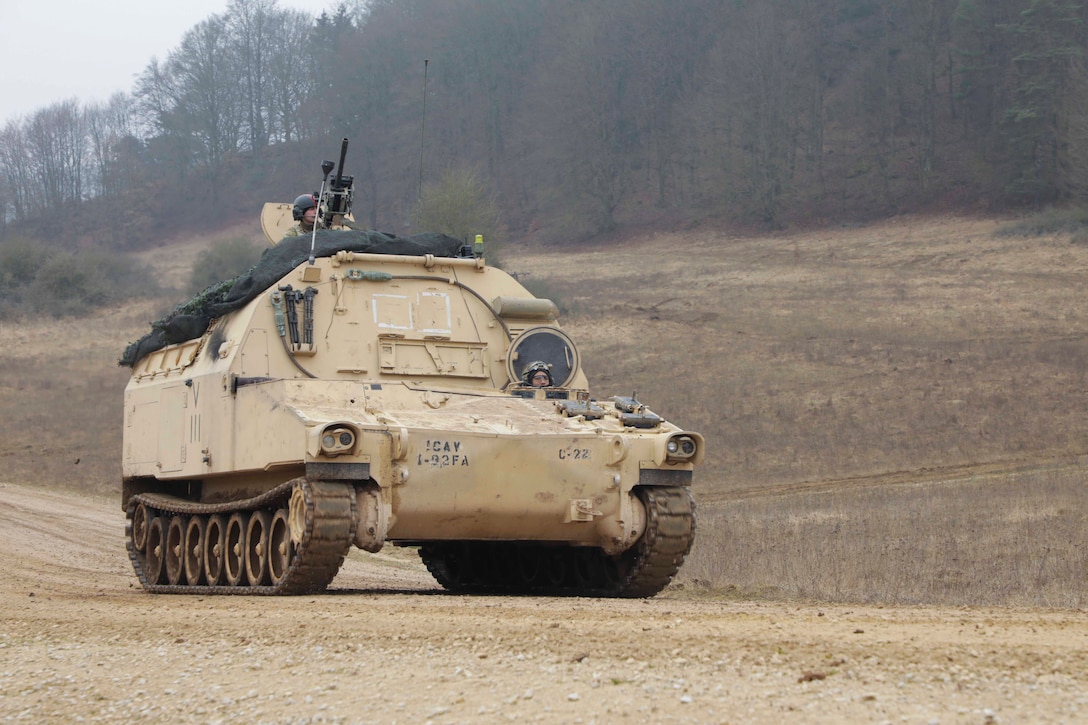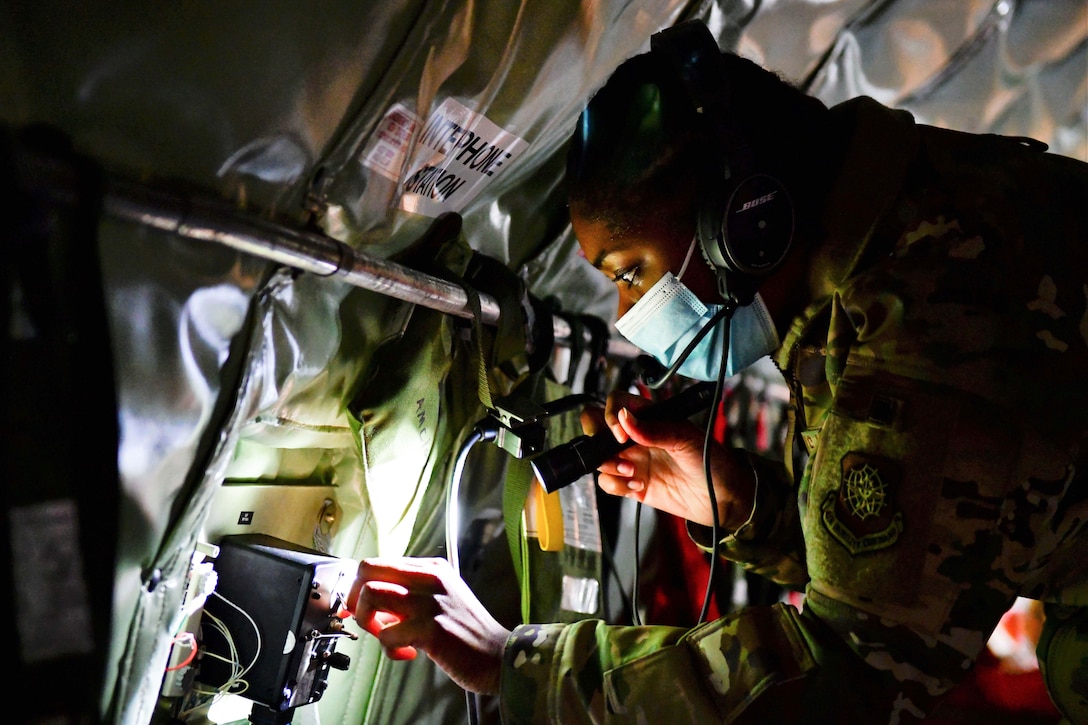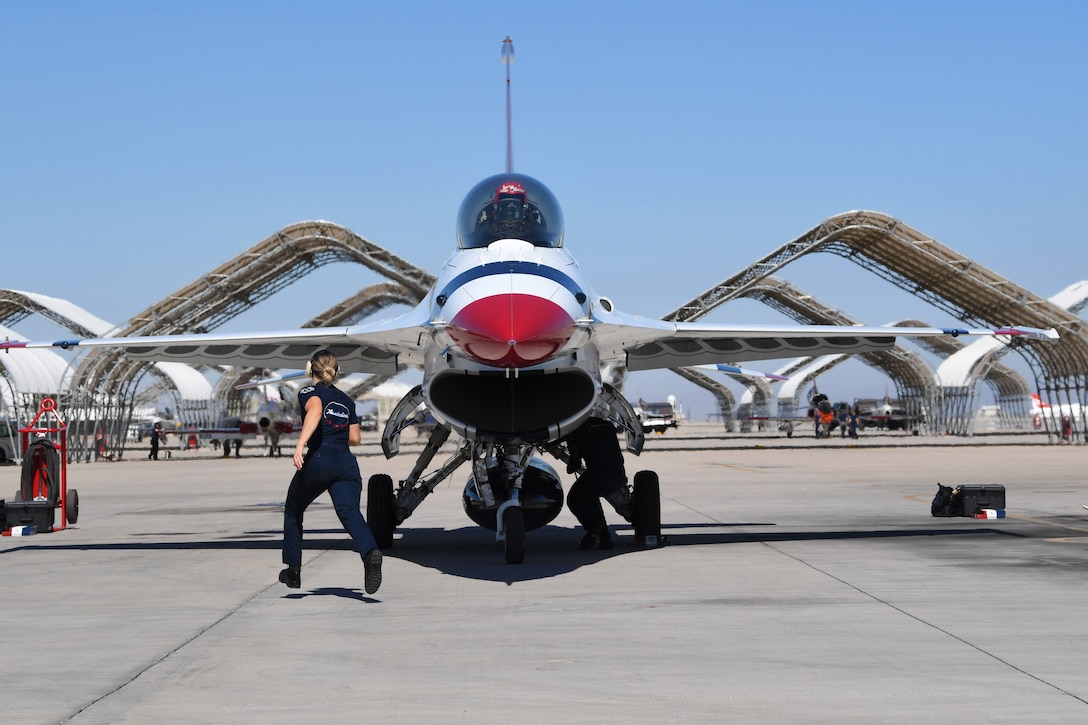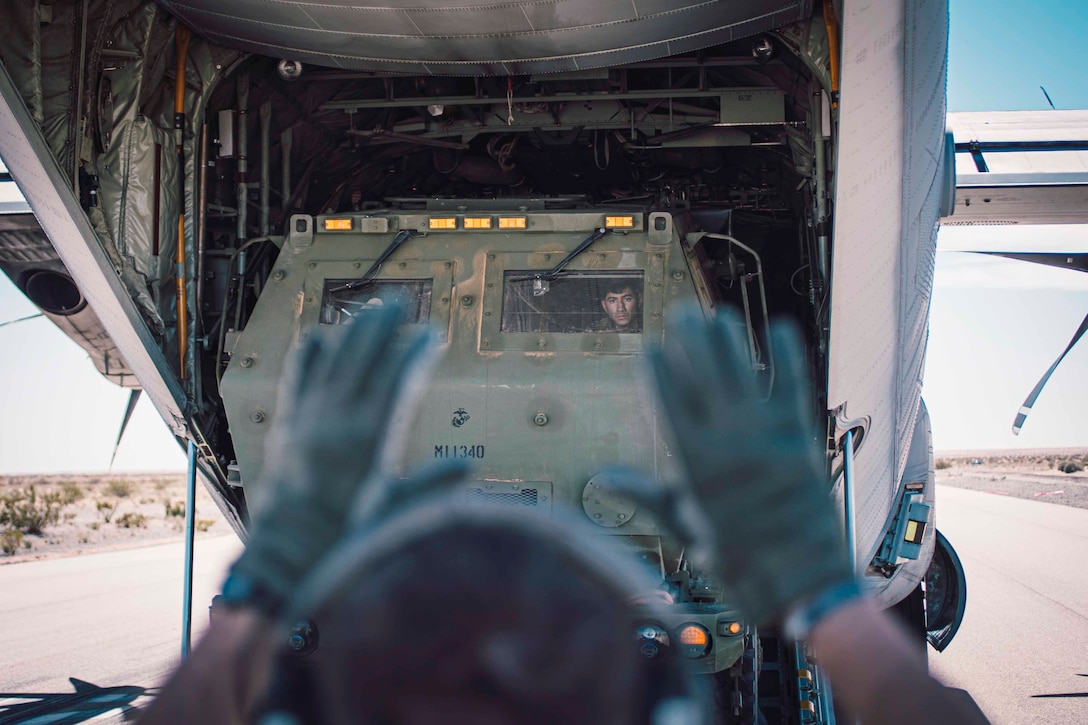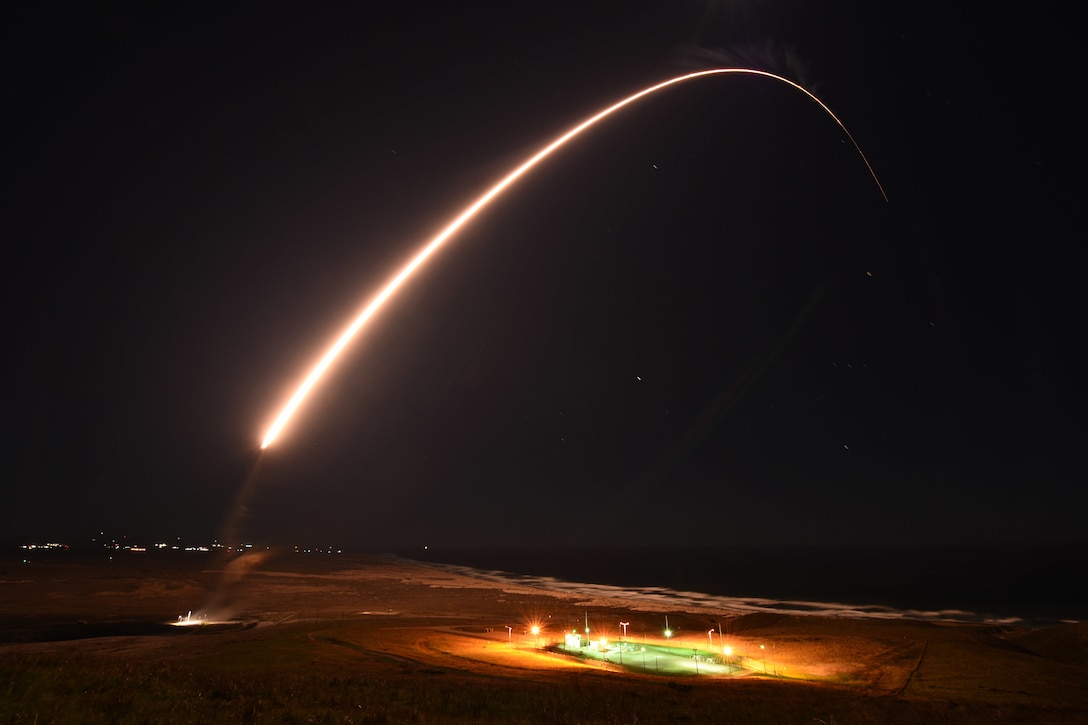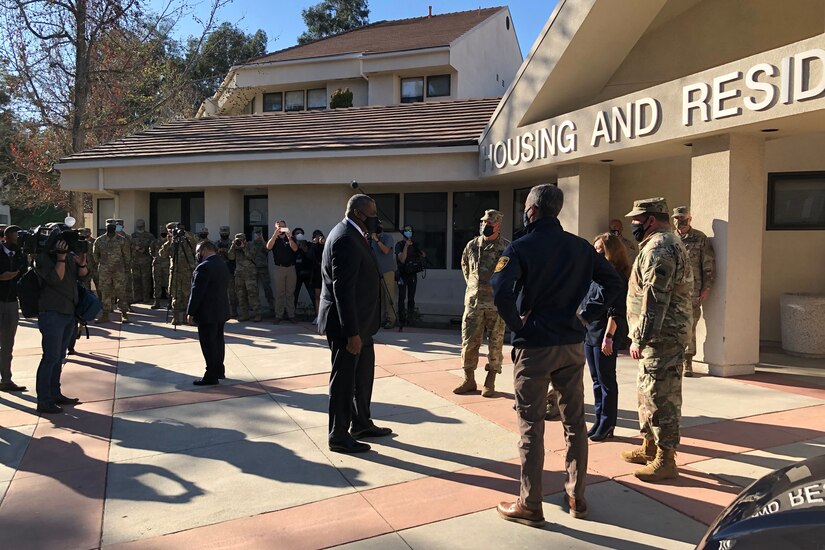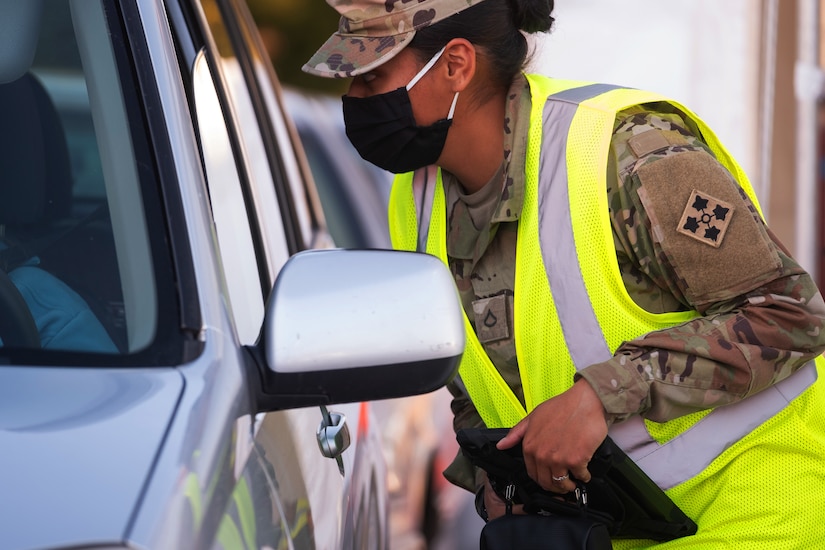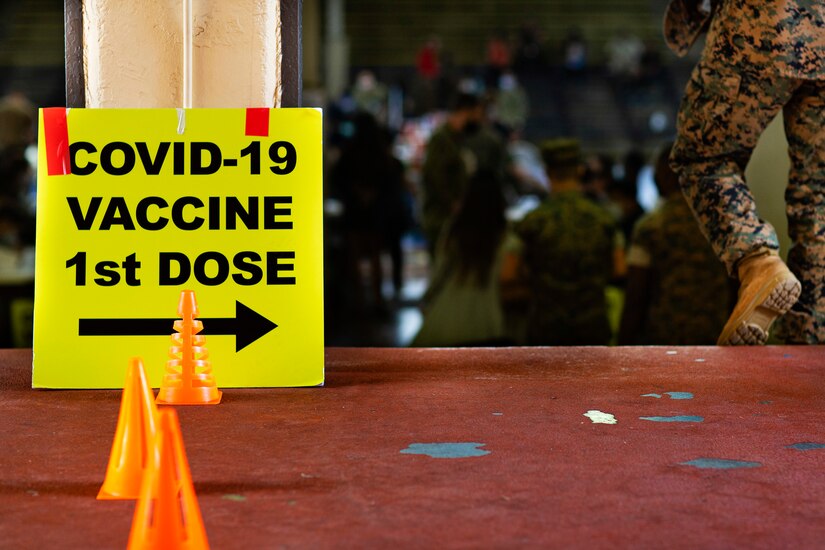Feb. 25, 2021
The acting secretary of the Navy and chief of naval operations announced today the following assignments:
Rear Adm. Jeffrey T. Jablon will be assigned as commander, Submarine
Force, U.S. Pacific Fleet, Pearl Harbor, Hawaii. Jablon is currently
serving as director, Military Personnel Plans and Policy Division, N13,
Office of the Chief of Naval Operations, Arlington, Virginia.
Rear Adm. (lower half) James A. Kirk, selected for promotion to rear
admiral, will be assigned as commander, Carrier Strike Group Fifteen,
San Diego, California. Kirk is currently serving as commander, Carrier
Strike Group Eleven, Everett, Washington.
Rear Adm. (lower half) Andrew J. Loiselle, selected for promotion to
rear admiral, will be assigned as director, Air Warfare Division, N98,
Office of the Chief of Naval Operations, Washington, D.C. Loiselle is
currently serving as commander, Carrier Strike Group Four, Norfolk,
Virginia.
Rear Adm. (lower half) Brendan R. McLane, selected for promotion to
rear admiral, will be assigned as commander, Naval Surface Force,
Atlantic, Norfolk, Virginia. McLane is currently serving as special
assistant to the commander, U.S. Fleet Forces, Norfolk, Virginia.
Rear Adm. (lower half) John A. Okon, selected for promotion to rear
admiral, will be assigned as director, Warfare Integration Directorate,
N2/N6F, Office of the Chief of Naval Operations, Washington, D.C. Okon
is currently serving as commander, Naval Meteorology and Oceanography
Command, Stennis Space Center, Mississippi.
Rear Adm. (lower half) James P. Waters III, selected for promotion to
rear admiral, will be assigned as director, Military Personnel Plans
and Policy Division, N13, Office of the Chief of Naval Operations,
Arlington, Virginia. Waters is currently serving as commander,
Submarine Group Two, Norfolk, Virginia.
Rear Adm. (lower half) Jeffrey T. Anderson will be assigned as
commander, Carrier Strike Group Three, Bremerton, Washington. Anderson
is currently serving as deputy director for political-military affairs
(Asia), J5, Joint Staff, Washington, D.C.
Rear Adm. (lower half) Michael W. Baze will be assigned as commander,
Expeditionary Strike Group Three, San Diego, California. Baze is
currently serving as director of Maritime Headquarters, U.S. Naval
Forces Europe/Africa/Sixth Fleet, Naples, Italy.
Rear Adm. (lower half) Richard T. Brophy Jr., will be assigned as
commander, Carrier Strike Group Four, Norfolk, Virginia. Brophy is
currently serving as commander, Naval Aviation Warfighting Development
Center, Fallon, Nevada.
Rear Adm. (lower half) Robert B. Chadwick II will be assigned as
commander, Carrier Strike Group Nine, San Diego, California. Chadwick
is currently serving as commander, Navy Region Hawaii; and commander,
Naval Surface Group, MIDPAC, Pearl Harbor, Hawaii.
Rear Adm. (lower half) Jeffrey J. Czerewko will be assigned as
director, fleet integrated readiness and analysis, N02R, U.S. Atlantic
Fleet, Norfolk, Virginia. Czerewko is currently serving as deputy
director, global operations, J39, J3, Joint Staff, Washington, D.C.
Rear Adm. (lower half) Brian L. Davies will be assigned as commander,
Submarine Group Two, Norfolk, Virginia. Davies is currently serving as
special assistant to the commander, Navy Personnel Command, Millington,
Tennessee.
Rear Adm. (lower half) Michael P. Donnelly will be assigned as
commander, Task Force Seven Zero; and commander, Carrier Strike Group
Five, Yokosuka, Japan. Donnelly is currently serving as commander, Navy
Region Korea; commander, U.S. Naval Forces Korea; and commander, Naval
Component, U.S. Forces Korea, United Nations Command, Korea.
Rear Adm. (lower half) Christopher M. Engdahl will be assigned as
commander, Expeditionary Strike Group Seven; and commander, Amphibious
Force, Seventh Fleet, Okinawa, Japan. Engdahl is currently serving as
president, Board of Inspection and Survey, Virginia Beach, Virginia.
Rear Adm. (lower half) Kenneth W. Epps will be assigned as commander,
Naval Supply Systems Command Weapons Systems Support, Philadelphia,
Pennsylvania. Epps is currently serving as deputy chief of staff for
Fleet Ordnance and Supply/Fleet Supply Officer, N41, U.S. Fleet Forces
Command Fleet, Norfolk, Virginia.
Rear Adm. (lower half) Robert M. Gaucher will be assigned commander,
Submarine Group Nine, Silverdale, Washington. Gaucher is currently
serving as director, Maritime Headquarters (N03), U.S. Pacific Fleet,
Pearl Harbor, Hawaii.
Rear Adm. (lower half) Gregory C. Huffman will be assigned as
commander, Carrier Strike Group Twelve, Norfolk, Virginia. Huffman is
currently serving as director, operations and plans, N31, Office of the
Chief of Naval Operations, Washington, D.C.
Rear Adm. (lower half) Kevin P. Lenox is currently assigned as deputy
director for operations, J3, U.S. Central Command, MacDill Air Force
Base, Florida. Lenox previously served as branch head, Joint
Intelligence Operations Center, J3, U.S. Central Command, MacDill Air
Force Base, Florida.
Rear Adm. (lower half) Daniel P. Martin will be assigned as
commander, Carrier Strike Group One, San Diego, California. Martin is
currently serving as senior military advisor to the assistant secretary
of state for political-military affairs, Washington, D.C.
Rear Adm. (lower half) Wesley R. McCall will be assigned as
commander, Navy Region Southeast, Jacksonville, Florida. McCall is
currently serving as executive assistant to the assistant secretary of
the Navy (energy, installations and environment), Washington, D.C.
Rear Adm. (lower half) John V. Menoni will be assigned as commander,
Expeditionary Strike Group Two, Virginia Beach, Virginia. Menoni is
currently serving as U.S. Indo-Pacific Command representative, Guam,
Commonwealth of the Northern Mariana Islands, Federated States of
Micronesia, Republic of Palau; commander, U.S. Naval Forces, Marianas;
and commander, Joint Region Marianas, Guam.
Rear Adm. (lower half) Curt A. Renshaw will be assigned as commander,
Carrier Strike Group Eight, Norfolk, Virginia. Renshaw is currently
serving as deputy commander, U.S. Naval Forces, U.S. Central Command;
and deputy commander, Fifth Fleet, Manama, Bahrain.
Rear Adm. (lower half) Philip E. Sobeck will be assigned as
commander, Logistics Group, Western Pacific; and commander, Task Force
Seven Three, Singapore. Sobeck is currently serving as commander,
Expeditionary Strike Group Three, San Diego, California.
Rear Adm. (lower half) Paul C. Spedero Jr. will be assigned as
commander, Joint Enabling Capabilities Command, U.S. Transportation
Command, Norfolk, Virginia. Spedero is currently serving as director,
fleet integrated readiness and analysis, N02R, U.S. Fleet Forces,
Norfolk, Virginia.
Rear Adm. (lower half) Christopher J. Sweeney will be assigned as
commander, Carrier Strike Group Eleven, Everett, Washington. Sweeney is
currently serving as deputy director for plans and policy, ECJ-5, U.S.
European Command, Stuttgart, Germany.
